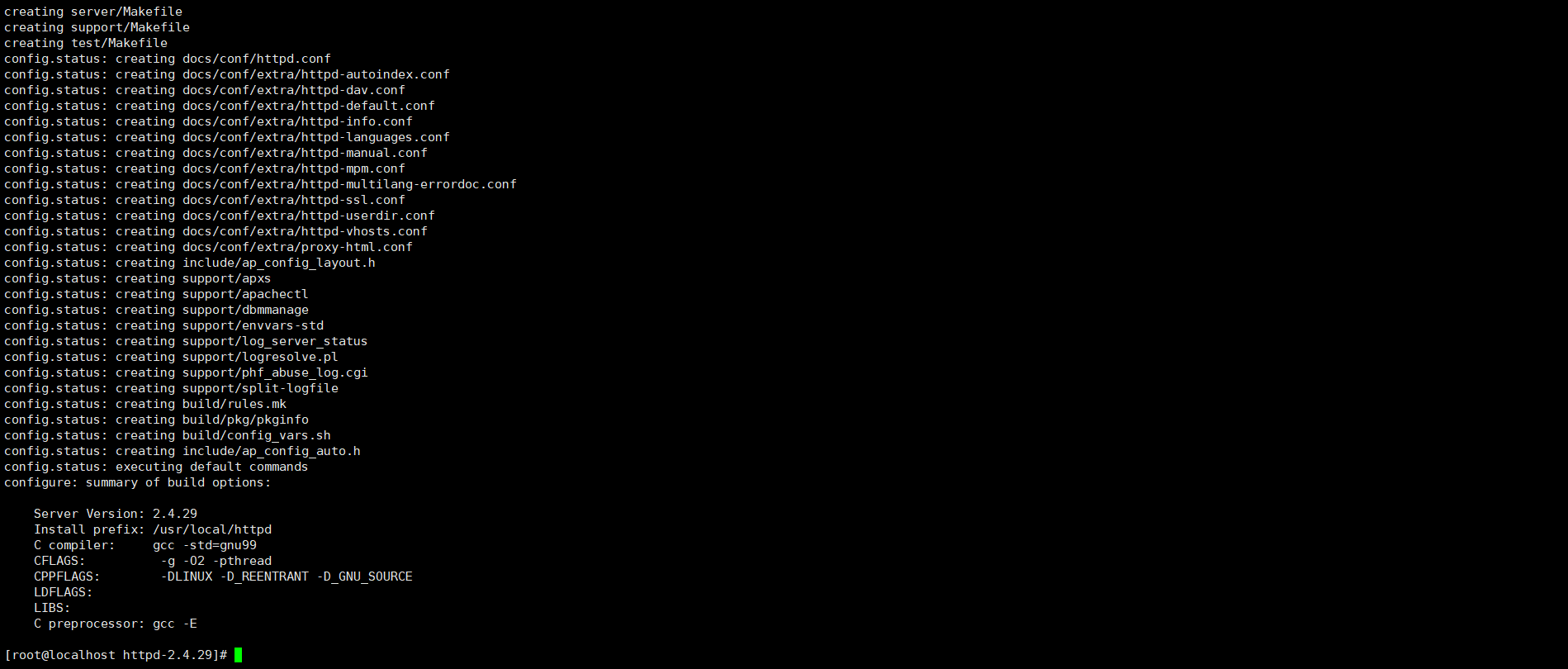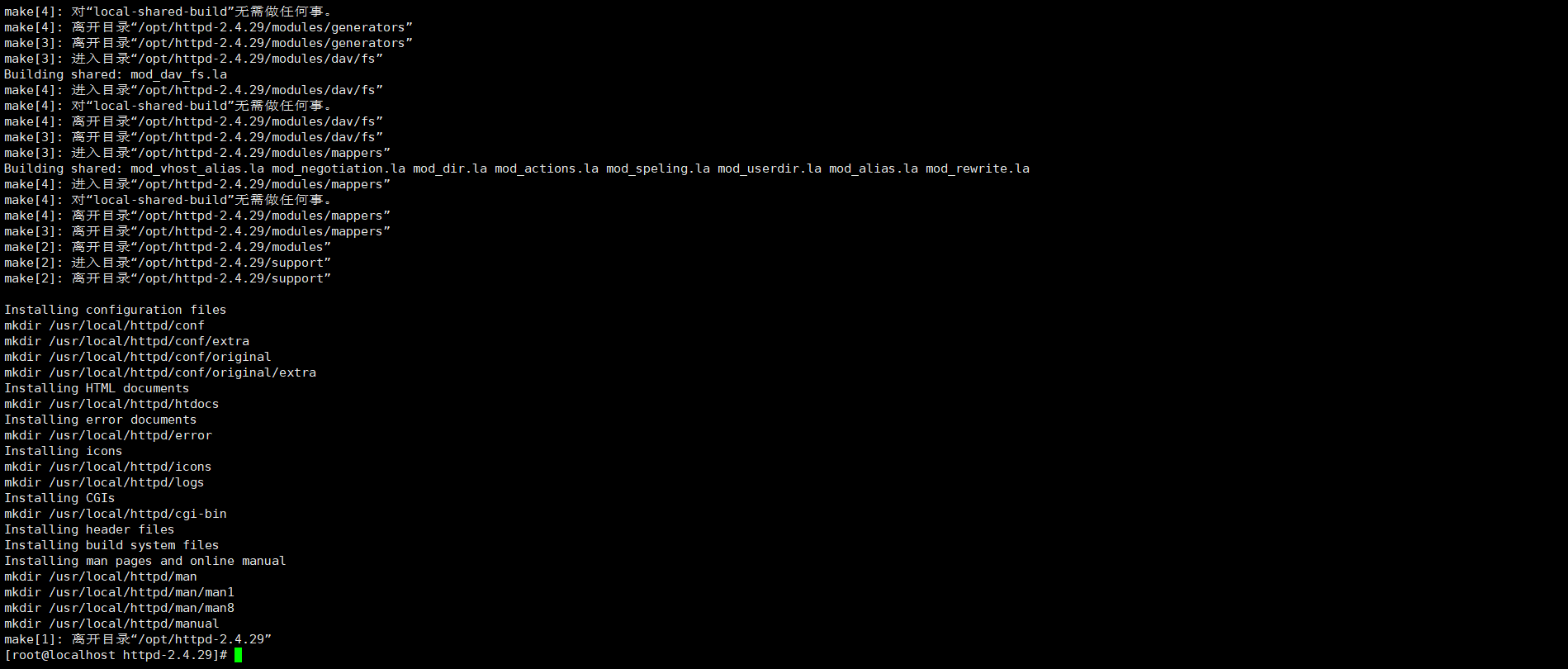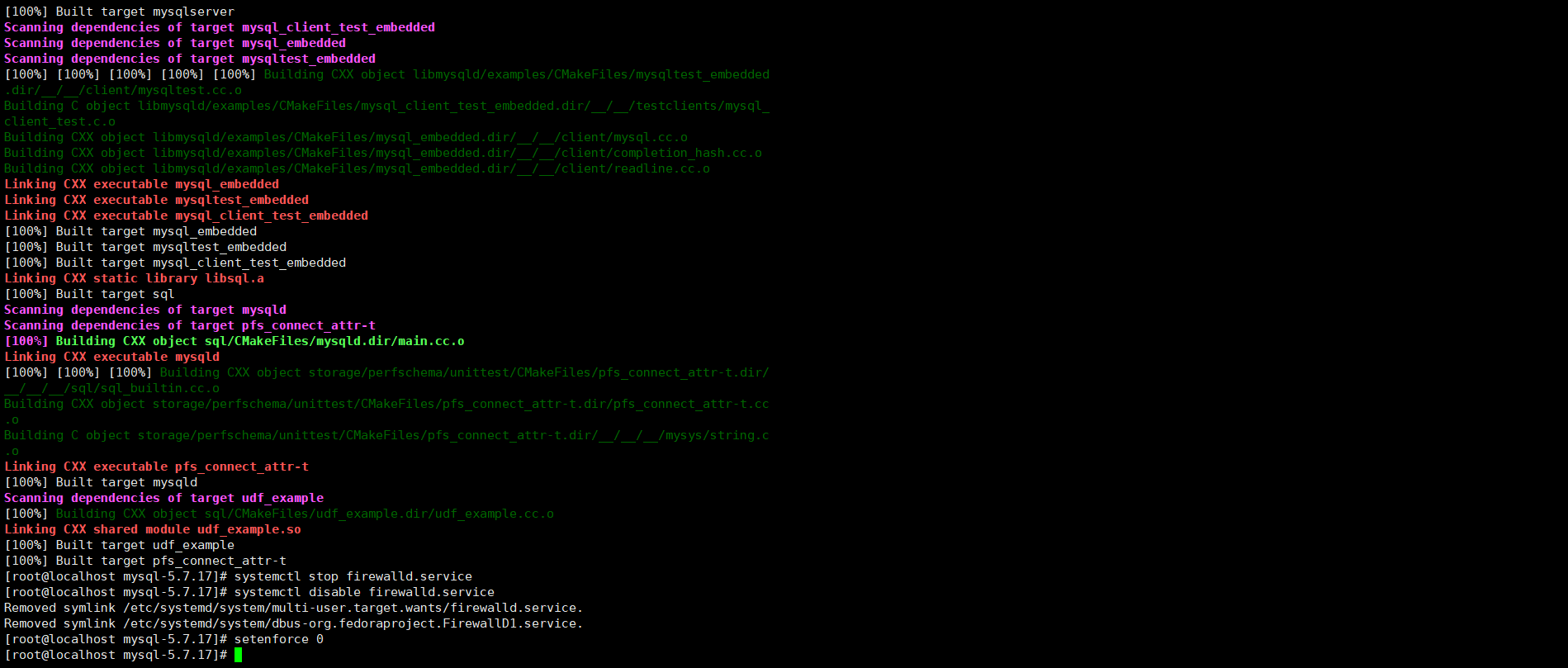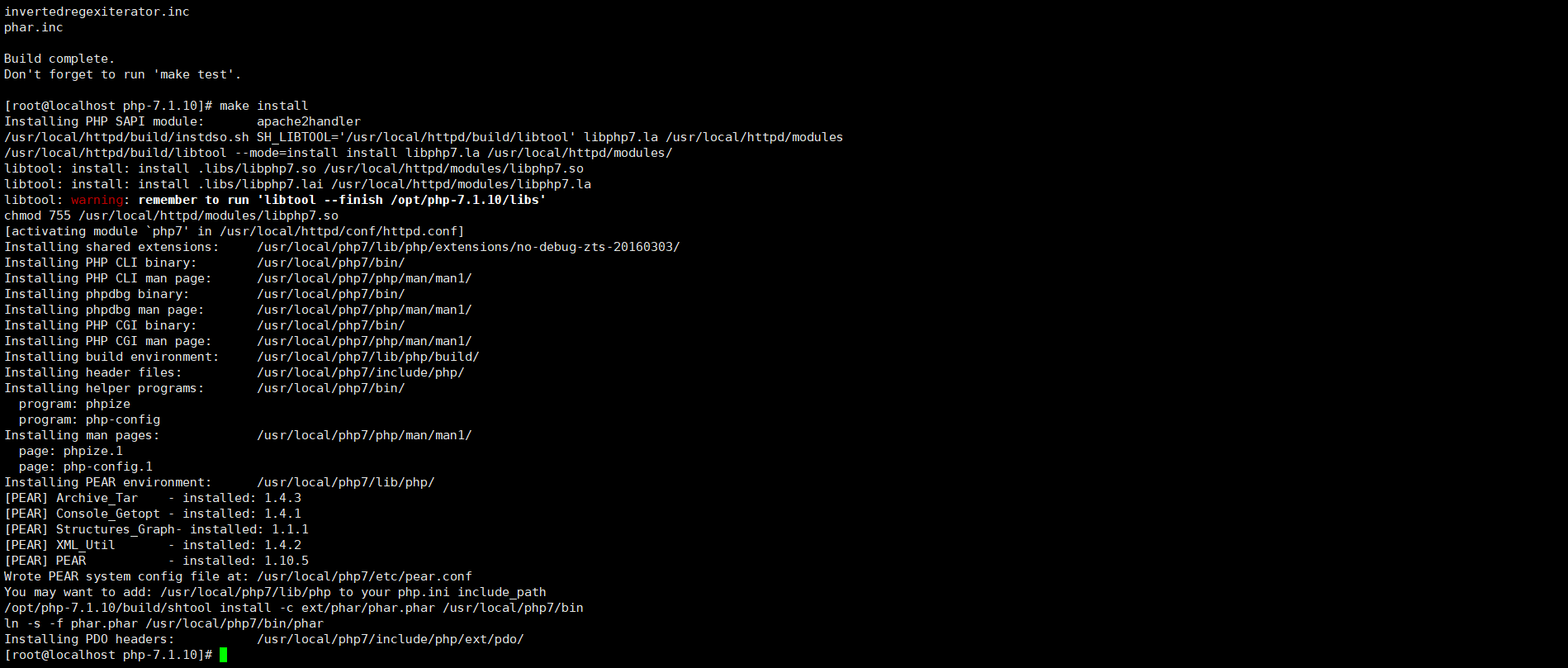Top level distribution analysis of LAMP architecture in Linux system
theory
1, LAMP (Linux Apache MySQL PHP)
LAMP It has the advantages of universal, cross platform, high performance and low price LAMP Whether it is performance, quality or price, it is the preferred platform for enterprises to build websites
(1) Distribution interpretation
- L stands for the server operating system using Linux
- A represents that the website service uses httpd software in the Apache Software Foundation
- M represents the MySQL database used in the background of the website
- P stands for the website is developed in PHP/Perl/Python and other languages
The products are open source software, which is a mature architecture framework in the world. Many popular commercial applications adopt this architecture.
(2) In depth explanation
- The client sends a request to connect to port 80 of the web server, and Apache processes the user's static request accordingly.
- If the client requests dynamic resources, Apache loads and calls libphpx So module (Brought by installing php program) for parsing.
- If the processing needs to communicate with the background database, it is completed by the php program.
- The Php program returns the processed results to Apache and Apache returns them to the client.
operation
1, Apache build
(1) First, turn off the firewall
systemctl stop firewalld setenforce 0
(2) Install environment dependent packages
be careful: yum The source needs to be configured
yum -y install gcc yum -y install gcc-c++ make yum -y install pcre yum -y install pcre-devel yum -y install expat-devel yum -y install perl Concise approach: yum -y install gcc gcc-c++ make pcre pcre-devel expat-devel perl
(3) Software configuration parameters
Put the software package in the / opt directory
cd /opt/ tar zxvf apr-1.6.2.tar.gz tar zxvf apr-util-1.6.0.tar.gz tar jxvf httpd-2.4.29.tar.bz2 #Unzip package
mv apr-1.6.2 /opt/httpd-2.4.29/srclib/apr mv apr-util-1.6.0 /opt/httpd-2.4.29/srclib/apr-util #Change location and rename
cd /opt/httpd-2.4.29 ./configure --prefix=/usr/local/httpd --enable-so --enable-rewrite --enable-charset-lite --enable-cgi ##Software module pointing --prefix=/usr/local/httpd #Specify the path where the httpd service program will be installed --enable-so #Enable dynamic loading module support to enable httpd to further expand its functions --enable-rewrite #Enable the web address rewriting function for website optimization, anti-theft chain and directory migration maintenance --enable-charset-lite #Start character set support to support pages encoded with various character sets --enable-cgi #Enable CGI (general Gateway Interface) script program support to facilitate the external expansion of application access capability of the website
Complete display:

(4) Compile
make #If multiple cores can be compiled using make -j, the number of cores can be specified using geometry make install #compile
The compilation is completed as shown in the figure:

(5) Path environment
ln -s /usr/local/httpd/conf/httpd.conf /etc/ ln -s /usr/local/httpd/bin/* /usr/local/bin/
(6) Add httpd service
vim /lib/systemd/system/httpd.service #Enter configuration file [Unit] Description=The Apache HTTP Server #describe After=network.target #Describe service category [Service] Type=forking #Background operation mode PIDFile=/usr/local/httpd/logs/httpd.pid #PID file location ExecStart=/usr/local/bin/apachectl $OPTIONS #Start service ExecReload=/bin/kill -HUP $MAINPID #According to PID overload configuration [Install] WantedBy=multi-user.target ##Write the above contents into the configuration file systemctl start httpd.service #Open service
(7) Modify httpd service configuration file
vim /etc/httpd.conf #Enter configuration file Line 52 change Listen Local machine IP:80 Line 197 change and uncomment ServerName domain name:80 Line 221 sets the default home page storage path DocumentRoot "/usr/local/httpd/htdocs" Line 255 default home page file name setting DirectoryIndex index.html httpd -t or apachectl -t #Check whether the configuration items of the configuration file are incorrect systemctl restart httpd.service #Confirm that there is no error and restart the service
2, Mysql database construction
(1) Installation environment dependency
yum -y install gcc yum -y install gcc-c++ yum -y install ncurses #Dynamic library of graphic interactive function under character terminal yum -y install ncurses-devel #ncurses development kit yum -y install bison #Parser yum -y install cmake #mysql needs to be compiled and installed with cmake
(2) Configuration software module
cd /opt tar zxvf mysql-5.7.17.tar.gz tar zxvf boost_1_59_0.tar.gz
mv boost_1_59_0 /usr/local/boost #Move and rename
cd /opt/mysql-5.7.17 cmake -DCMAKE_INSTALL_PREFIX=/usr/local/mysql #Specify the installation path of mysql -DMYSQL_UNIX_ADDR=/usr/local/mysql/mysql.sock #Specify the storage path of mysql process listening socket file (database connection file) -DSYSCONFDIR=/etc #Specify the storage path of the configuration file -DSYSTEMD_PID_DIR=/usr/local/mysql #Specify the storage path of the process file -DDEFAULT_CHARSET=utf8 #Specifies the character set encoding used by default, such as utf8 -DDEFAULT_COLLATION=utf8_general_ci #Specifies the default character set collation rule to use -DWITH_EXTRA_CHARSETS=all #Specifies that other character set encodings are supported -DWITH_INNOBASE_STORAGE_ENGINE=1 #Install INNOBASE storage engine -DWITH_ARCHIVE_STORAGE_ENGINE=1 #Installing the ARCHIVE storage engine -DWITH_BLACKHOLE_STORAGE_ENGINE=1 #Installing the BLACKHOLE storage engine -DWITH_PERFSCHEMA_STORAGE_ENGINE=1 #Install FEDERATED storage engine -DMYSQL_DATADIR=/usr/local/mysql/data #Specify the storage path of the database file -DWITH_BOOST=/usr/local/boost #Specify the path of boost. If MySQL boost integration package is used for installation, - DWITH_BOOST=boost -DWITH_SYSTEMD=1 #Generate files for systemctl management
Completion diagram:

(3) Compilation and installation
Note: if the number of cores used for compilation does not match the running memory of the virtual machine, it is easy to report an error
make #If multiple cores can be compiled using make -j, the number of cores can be specified using geometry make install
Completion diagram:

(4) Create mysql user
useradd -M -s /sbin/nologin mysql
(5) mysql configuration file
vim /etc/my.cnf [mysqld] #Service global settings user = mysql #Set management user basedir=/usr/local/mysql #Specify the installation directory of the database datadir=/usr/local/mysql/data #Specify the storage path of the database file port = 3306 #Specify port character-set-server=utf8 #Set the encoding format of the server character set to utf8 pid-file = /usr/local/mysql/mysqld.pid #Specify pid process file path socket=/usr/local/mysql/mysql.sock #Specify database connection file bind-address = 0.0.0.0 #Set the listening address. 0.0.0.0 means that all IP addresses are allowed. If multiple IP addresses are allowed, they should be separated by spaces skip-name-resolve #Disable DNS resolution max_connections=2048 #Set the maximum number of mysql connections default-storage-engine=INNODB #Specify the default storage engine max_allowed_packet=16M #Set the maximum packet size received by the database server-id = 1 #Specify service ID number
Command panel input after saving: sql_mode=NO_ENGINE_SUBSTITUTION,STRICT_TRANS_TABLES,NO_AUTO_CREATE_USER,NO_AUTO_VALUE_ON_ZERO,NO_ZERO_IN_DATE,NO_ZERO_DATE,ERROR_FOR_DIVISION_BY_ZERO,PIPES_AS_CONCAT,ANSI_QUOTES sql_mode Common values are as follows: NO_ENGINE_SUBSTITUTION ##If the required storage engine is disabled or not compiled, an error is thrown. When this value is not set, the default storage engine is used instead and an exception is thrown STRICT_TRANS_TABLES ##In this mode, if a value cannot be inserted into a transaction table, the current operation will be interrupted and the non transaction table will not be restricted NO_AUTO_CREATE_USER ##GRANT is prohibited from creating users with blank passwords NO_AUTO_VALUE_ON_ZERO ##The self growing column in mysql can start from 0. By default, the self growth column starts from 1. If you insert data with a value of 0, an error will be reported NO_ZERO_IN_DATE ##Zero date and month are not allowed NO_ZERO_DATE ##mysql database is not allowed to insert zero date. Inserting zero date will throw an error instead of a warning ERROR_FOR_DIVISION_BY_ZERO ##During INSERT or UPDATE, if the data is divided by zero, an error is generated instead of a warning. By default, MySQL returns NULL when the data is divided by zero PIPES_AS_CONCAT ##Treating "|" as a concatenation operator of a string rather than an or operator is the same as in Oracle database and is similar to the Concat function of a string ANSI_QUOTES Enable ANSI_QUOTES You cannot use double quotation marks to refer to a string after, because it is interpreted as an identifier
(6) Change the primary group of mysql installation directory and configuration file
Note: if there is no such directory or file, the make install command may not run after compiling above
chown -R mysql:mysql /usr/local/mysql/ chown mysql:mysql /etc/my.cnf
(7) Set path environment variable
echo 'export PATH=/usr/local/mysql/bin:/usr/local/mysql/lib:$PATH' >> /etc/profile ##Path variable source /etc/profile ##Update file
(8) Initialize database
cd /usr/local/mysql/bin/ ./mysqld \ --initialize-insecure \ --user=mysql \ --basedir=/usr/local/mysql \ --datadir=/usr/local/mysql/data --initialize-insecure #Generation initialization password is null --user=mysql #Specify administrative users --basedir=/usr/local/mysql #Specify the installation directory of the database --datadir=/usr/local/mysql/data #Specify the storage path of the database file
(9) Add mysqld system service
cp /usr/local/mysql/usr/lib/systemd/system/mysqld.service /usr/lib/systemd/system/ #For systemctl service management systemctl daemon-reload #Refresh recognition systemctl start mysqld.service #Open service systemctl enable mysqld #Power on self start netstat -anpt | grep 3306 #View port
(10) Modify the login password of mysql
mysqladmin -u root -p password "password" #Set password for root account
(11) Authorize remote login
mysql -u root -p mysql grant all privileges on *.* to 'root'@'%' identified by 'xxxxxx'; #The root user is authorized to log in remotely at all terminals with the password of xxxxxx and have operation authority on all databases and tables
show databases; #View existing databases
Completion diagram:

3, PHP build
(1) Installation environment dependency
yum -y install \ gd \ libjpeg libjpeg-devel \ libpng libpng-devel \ freetype freetype-devel \ libxml2 libxml2-devel \ zlib zlib-devel \ curl curl-devel \ openssl openssl-devel
(2) Configuration software module
cd /opt tar jxvf php-7.1.10.tar.bz2 cd /opt/php-7.1.10 ./configure --prefix=/usr/local/php7 #Specify the path where the PHP program will be installed --with-apxs2=/usr/local/httpd/bin/apxs #Specifies the file location of the apxs module support program provided by the Apache httpd service --with-mysql-sock=/usr/local/mysql/mysql.sock #Specify the storage path of mysql database connection file --with-config-file-path=/usr/local/php7 #Set the configuration file for PHP Where ini will be stored --with-mysqli \ #add to MySQL Extended support #MySQL technology can not only call mysql, but also make the stored procedure of MySQL more stable --with-zlib \ #Support zlib function and provide data compression --with-curl \ #Enable curl extension function to realize HTTP Get download and Post request --with-gd \ #Activate gd library support --with-jpeg-dir \ #Activate jpeg support --with-png-dir \ #Activate png support --with-freetype-dir \ --with-openssl \ --enable-mbstring \ #Enable multi byte string function to support Chinese and other codes --enable-xml \ #Open extensible markup language module --enable-session \ #conversation --enable-ftp \ #Text transfer protocol --enable-pdo \ #function library --enable-tokenizer \ #Token interpreter --enable-zip #ZIP compression format
Completion diagram:

(3) Compilation and installation
make #If multiple cores can be compiled using make -j, the number of cores can be specified using geometry make install

(4) Copy the template file as the main configuration file of PHP and modify it
cp /opt/php-7.1.10/php.ini-development /usr/local/php7/php.ini #Use PHP. PHP when testing the environment Ini development file, while using PHP in the production environment Ini production file vim /usr/local/php7/php.ini Line 1170 change mysqli.default_socket = /usr/local/mysql/mysql.sock Line 939 and cancel comment date.timezone = Asia/Shanghai
(5) Put the PHP executable program file into the directory of path environment variable for system identification
ln -s /usr/local/php7/bin/* /usr/local/bin/ php -m #See which modules PHP loads
(6) Modify the configuration file of httpd service to make apache support PHP
vim /etc/httpd.conf Line 393 change and insert the following AddType application/x-httpd-php .php AddType application/x-httpd-php-source .phps Line 255: change and modify the file name setting of the first page DirectoryIndex index.html index.php
So far, the LAMP architecture has been basically built